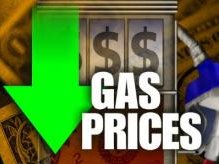 As oil barrel and gas pump prices stay down, adopting and enforcing environmental policies and gaining support for alternatives like electric, hydrogen and advanced biofuels are seeing higher hurdles to cross over. Here’s a look at what effect it may have in Washington – along with forecasts from Navigant Research on where electric vehicle sales are likely to be heading……….
As oil barrel and gas pump prices stay down, adopting and enforcing environmental policies and gaining support for alternatives like electric, hydrogen and advanced biofuels are seeing higher hurdles to cross over. Here’s a look at what effect it may have in Washington – along with forecasts from Navigant Research on where electric vehicle sales are likely to be heading……….
- Automakers are expressing concern about meeting the 54.5 mpg corporate average fuel economy mandate by 2025; and oil companies say the decline in oil revenue means the industry can’t afford stringent climate regulations. OEMs and “big oil” might be more resistant to supporting these policies in the US and abroad.
- Sales have been increasing for pickups, minivans and SUVs that they’d shunned when gasoline as $3 or more a gallon. Automakers have been counting on stronger demand for hybrids and EVs to meet the 54.5 mpg target.
- Climate change had been a key theme during Obama’s two presidential campaigns. Reducing carbon emissions at power plants has been a leading policy initiative, along with funding for clean energy and renewable-energy projects on public land. As for fuel efficiency and greenhouse gas emissions reductions in passenger vehicles, EPA Administrator Gina McCarthy says the administration isn’t willing to ease off fuel economy and sees it as a “long-term investment” for the industry.
- While light-duty vehicle sales will continue increasing with global demand, studies by International Energy Agency (IEA) and ExxonMobil see efficiency leveling out the playing field. Exxon projects passenger vehicles will rise from 825 million in 2010 to 1.7 billion in 2040, with sharp gains in fuel efficiency offsetting the rise. That will come from an increase in global average fuel economy going up to 45 mpg in 2040, up 60% from 2010. New vehicle technologies like turbocharging will have a lot to do with the increase; increased hybrid sales will also contribute to those numbers.
- Commercial transportation will cause energy demand to grow during that time. Exxon expects that by 2025, heavy-duty vehicles are likely to surpass light-duty vehicles as the largest energy-consuming segment in transportation. China and India are expected to account for about 30% of the global growth in demand for energy for heavy-duty vehicles, and the US and Europe combines should account for only about 10%. Economic growth will drive demand for heavy-duty vehicles, marine, aviation, and rail.
- Navigant Research expects the total for light-duty electric vehicles to grow from 2.7 million electric vehicles sold by the end of 2014 to at least 6.4 million by 2023. Fuel efficiency advances being deployed within internal combustion engines like stop-start technologies and lightweight materials will play its competitive part in the market. On the commercial vehicle side of the business, Navigant expects global sales of electric drive and electric-assisted trucks and buses to grow from less than 16,000 in 2014 to nearly 160,000 by 2023.
- Reading these media and research reports illustrates that making the case for clean transportation can be most effectively stated by emphasizing a few themes: reducing greenhouse gas emissions and petroleum consumption; accessing more stable energy markets and pricing trends such as electricity, natural gas, and propane; being less dependent on foreign oil imports and vulnerable to price volatility; and supporting US job creation and cleantech and clean transportation industry growth through vehicle acquisitions, infrastructure, and capital investments.



